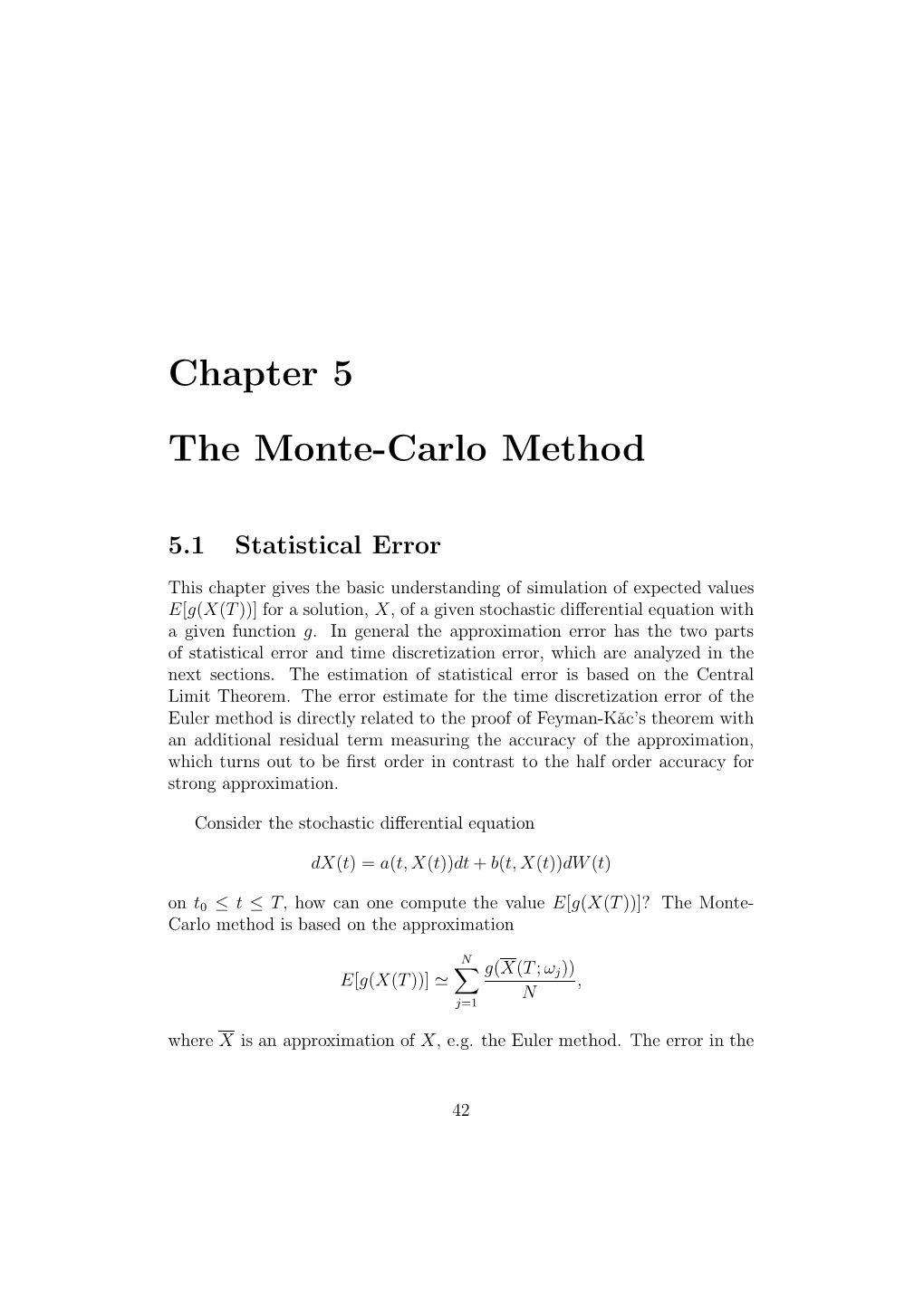Mastering Finance with Monte Carlo Methods: A Beginner's Guide

In the intricate world of finance, risk management, and decision-making, the Monte Carlo simulation emerges as a powerful computational technique that can help in understanding the behavior of an asset, strategy, or portfolio under varied circumstances. Often used by financial analysts, quants, and investment professionals, this method leverages the power of randomness to make informed predictions. This guide is designed to introduce beginners to Monte Carlo simulation in finance, detailing its applications, how to perform simulations, and considerations to keep in mind.
What is Monte Carlo Simulation?

Monte Carlo simulation is a mathematical technique used to model the probability of different outcomes in a process that cannot easily be predicted due to the intervention of random variables. Here’s how you can visualize it:
- Random Sampling: Instead of single point estimates, Monte Carlo simulations use random samples from probability distributions for uncertain variables.
- Repetition: The process is run many times (often thousands or millions) to produce a range of potential outcomes.
- Analysis: The results from these simulations are then analyzed to provide statistical information about the distribution of possible outcomes.
💡 Note: Monte Carlo methods are not about forecasting the future but understanding the range and likelihood of potential outcomes based on assumptions and historical data.
Applications in Finance

Monte Carlo simulation is ubiquitous in financial applications due to its flexibility in handling complex models with multiple uncertain parameters. Here are some of its common applications:
- Risk Management: To assess risk in financial portfolios, understanding the likelihood of extreme events and their impact.
- Investment Valuation: For pricing options, derivatives, or any complex securities where an analytical solution is not feasible.
- Asset Allocation: To optimize portfolios by simulating various asset mixes and their future values.
- Forecasting: To predict future financial performance or market movements with uncertainty.
📉 Note: In finance, Monte Carlo simulation is crucial for understanding the "tails" of a distribution, i.e., the low probability but high-impact events.
How to Perform a Monte Carlo Simulation

Let’s break down the process of conducting a Monte Carlo simulation for financial analysis:
- Define the Problem: Clearly state what you want to simulate, e.g., the future value of a portfolio.
- Identify Uncertain Variables: Determine which variables in your model are uncertain or stochastic.
- Model the Uncertainties: Use historical data or expert judgment to assign probability distributions to each variable.
- Create a Simulation Model: Construct a model that represents the real system or process you’re studying.
- Run Simulations:
- Randomly sample values from each variable’s distribution.
- Calculate the result for the iteration.
- Repeat this process thousands of times to get a large sample of outcomes.
- Analyze Results:
- Calculate statistical measures like mean, median, standard deviation, and percentiles.
- Visualize results through histograms or cumulative distribution functions (CDF).
🧮 Note: The accuracy of Monte Carlo simulation heavily depends on the quality of the input data and the assumptions made about the distributions of uncertain variables.
Implementing Monte Carlo in Financial Models

Here’s a simple example of how to implement a Monte Carlo simulation to estimate the future value of an investment:
import numpy as np import matplotlib.pyplot as plt
def monte_carlo(investment, time_period, num_simulations, mean, variance): final_values = []
for _ in range(num_simulations): returns = np.random.normal(mean, np.sqrt(variance), time_period) cumulative_return = np.prod(1 + returns) final_value = investment * cumulative_return final_values.append(final_value) return final_valuesinvestment = 10000 time_period = 10 # 10 years num_simulations = 10000 mean = 0.05 # 5% annual mean return variance = 0.02 # 2% variance of return
results = monte_carlo(investment, time_period, num_simulations, mean, variance)
plt.hist(results, bins=50) plt.xlabel(“Final Portfolio Value”) plt.ylabel(“Frequency”) plt.title(“Monte Carlo Simulation Results”) plt.show()
Interpreting the Results

Interpreting the results of a Monte Carlo simulation involves several key steps:
- Distribution Shape: Understanding the distribution of potential outcomes helps in risk assessment.
- Confidence Intervals: To derive a range where the actual outcome is likely to fall with a certain probability.
- Variance and Skewness: These metrics help in understanding the stability and potential for extreme outcomes.
- Decision Making: Using these insights to make informed decisions based on the likelihood of different scenarios.
📘 Note: Don't solely rely on the central tendency (mean or median). The spread, shape, and tails of the distribution are equally or sometimes more important for decision making in finance.
Limitations and Considerations

While Monte Carlo simulation is a versatile tool, there are several considerations and limitations:
- Input Data Quality: The accuracy of your simulations is only as good as the data you feed into it.
- Model Complexity: Overly complex models can require significant computational power and may lead to overfitting.
- Assumption of Independence: If variables are not independent, correlations must be carefully modeled.
- Random Seed: Changing the random seed can produce different outcomes, illustrating the inherent uncertainty.
- Simulation Time: More simulations can increase accuracy but also the time required.
The landscape of finance is marked by uncertainty, but with tools like Monte Carlo simulation, we can model this uncertainty in a structured way to make better-informed decisions. By simulating thousands of scenarios, we gain insights into the behavior of financial instruments under a wide range of conditions. Understanding not just the potential returns but the risks involved allows for better risk management, pricing, and strategic planning. It's a journey from probability to strategy, where each Monte Carlo run brings us closer to understanding the financial uncertainties we navigate daily.
What are the common applications of Monte Carlo Simulation in finance?

+
Monte Carlo Simulation is used for risk management, investment valuation, asset allocation, and forecasting financial performance or market movements.
How does Monte Carlo Simulation help with decision making?

+
By providing a distribution of potential outcomes, it aids in understanding the probability of different scenarios, helping to make informed decisions based on the risk-reward profile.
Can Monte Carlo Simulation replace traditional forecasting methods?

+
It complements traditional methods by adding a probabilistic layer to the analysis, allowing for better understanding of uncertainty but does not replace deterministic methods entirely.